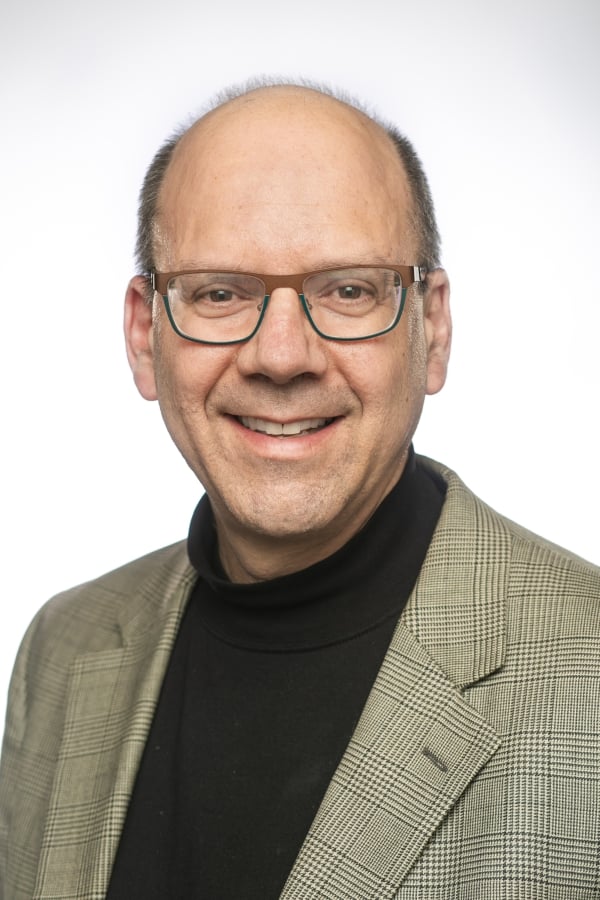

In his opening keynote at the inaugural Interdisciplinary Science Forum last month, historian Ed Balleisen, vice provost for interdisciplinary studies at Duke University, noted that three years ago, his position was exceedingly rare: He didn’t know of a single institution aside from Duke that had established an office of interdisciplinary affairs in the provost’s office. Now there are a number of others, reflecting a growing interest in the pursuit of disciplinary collaboration to advance research and solve global problems.
At the daylong forum in Washington, D.C., hundreds of researchers and academics from around the world gathered to share insights, questions and best practices on what Balleisen called “interdisciplinarity 2.0.” (Sponsored by Inside Higher Ed’s parent company, Times Higher Education, and the Schmidt Science Fellows, the event coincided with the release of THE’s global Interdisciplinary Science Rankings 2025.)
Between sessions, Balleisen sat down with Inside Higher Ed to talk about what interdisciplinarity actually means, as well as the promise and challenges it holds. The interview has been edited for length and clarity.

Ed Balleisen
1. How would you define interdisciplinarity?
Interdisciplinarity for me involves engaging with questions, conceptual frameworks, methods of inquiry that span at least two, and often more than two, disciplinary traditions. There are related concepts of multidisciplinarity and transdisciplinarity, which I think involve greater synthesis or integration across those different disciplinary approaches. And as I mentioned in the talk, there’s the recent notion of convergent research as connecting that more academic process to societal context.
2. As you noted in your keynote address, interest in interdisciplinary research has exploded in recent years. Why is that?
In some respects, you could argue it’s a return. We have land-grant universities in the United States, the oldest ones since the 19th century, explicitly with the mission to serve their states and to engage in the development of useful inventions or address the kinds of challenges—but also seize the kinds of opportunities—associated with processes of economic development.
What has happened since the late 19th century is a significant explosion in the content of knowledge. We have had decades and decades of research and insight to build on, which has then tended to lead to ever greater specialization. There’s more to know about any given area, more to grasp to be able to ask a new question. And that can drive—and has driven—institutionally a process of reorganizing around a tractable area of knowledge. There’s power in that, but there’s also weakness.
So what you’re seeing now is not something that’s totally new. I think about the framework of experiential learning as quite in sync with John Dewey’s approach to social philosophy—learning by doing was his philosophy of education. And I don’t think these things are at odds with one another. If you organize them the right way, they actually complement and strengthen each other. Learning by doing gives students a greater sense of self-efficacy. It gives them resilience. It also gives them motivation. But as knowledge gets ever more expansive, unless you’re going to channel people through very narrow corners of it, there’s a constant process of figuring out how to reconceptualize, to create space for integration. And similarly, if you’re going to include experiential learning in the mix, you have to be willing to throw some element of didactic instruction over the side of the boat in order to have enough space on the journey for people to actually experiment and be creative.
3. In some ways the endeavor of the university seems sort of antithetical to interdisciplinarity, just by virtue of the way it’s organized. Everything is so siloed—academic departments, students have to pick a major … So how do you square that?
Disciplines are really important. You have to have a grounding in conceptual frameworks, in methods, for answering questions, for approaches to posing questions in order to be able to conduct research. But it is also true that a single method can be extremely limited in understanding the full complexity of an issue and grasping the implications of an idea for its potential impact on reimagining how we organize the world. So there are always going to be tensions between disciplinary structures and ways of thinking and interdisciplinary, transdisciplinary or convergent ways of engaging with a problem or an opportunity.
The challenge is keeping that tension constructive. You want people to be coming to the table with specific expertise and constraints and perspective. That’s equally true for wanting to have viewpoints that are not just grounded in disciplinary expertise but also lived experience … It remains the case that the vast majority of universities invest a significant fraction of their faculty hiring and curricular development around disciplinary channels. I would say, though, that the fraction that has also been going to interdisciplinary or convergent kinds of thinking is growing. The new universities that have emerged in the last 15 or 20 years, and especially the last five, are much more likely not to have strong disciplinary foundations for how they organize themselves.
4. Why do we need to have a forum focused specifically on interdisciplinary science?
Well, it is certainly the case that science and engineering attract more investment publicly. The National Endowment for the Humanities does not exactly have a companion budget to the National Science Foundation or National Institutes of Health or the Department of Energy or the Department of Defense, with regard to public funding of university-grounded research. The dollars going to science and engineering dwarf the funding going to social science and humanities.
Another reason, I think, is that this investment does generate and empower lots of economic development. The rationale for public investment into the sciences is significantly linked to a strong presumption that it pays dividends in terms of eventual impact through inventions, new technologies, new businesses. I do think integration between science and engineering and other modes of inquiry really is important. If you want to reimagine how humans interact with one another, it’s kind of important to understand their cultural context, their social structures. It’s important to understand how institutions function, whether those are in the university itself or how markets function or how people interact in social contexts—all of those things are essential if you want to even have just the modest goal of deploying technology in a way that maximizes its benefits and minimizes unanticipated problems.
5. What didn’t I ask you that you want people to know about interdisciplinarity?
A lot of the discussion is around the notion of an ecosystem, which I think is a very helpful metaphor. For me the broader higher education system includes not just really strong universities and access-oriented universities or colleges, but also community colleges, which have an absolutely essential role in the American system. A strong ecosystem is not going to involve monoculture. We don’t need to produce exactly the same kind of institutions; the variety is a strength of the American approach. And within any given university, you don’t need every college or school having the same mix of what it does. There’s enormous strength in having a blend of disciplinary and interdisciplinary units.
From the perspective of what we’re offering to students, I think there is enormous strength in providing high-quality didactic instruction, but also a lot of learning by doing. I think we could do a lot more learning by doing earlier, because it helps drive motivation and understanding of why the didactic instruction is really important. This is particularly true if we want to prepare our graduates to launch well—not just in a narrow sense of career exploration, but as community members and citizens. If you want people to be able to work with each other across difference—a very significant challenge right now for our society, which has become polarized—there is no better way to foster empathy and understanding than having to work for an extended period with people not like you on a project that you care about.